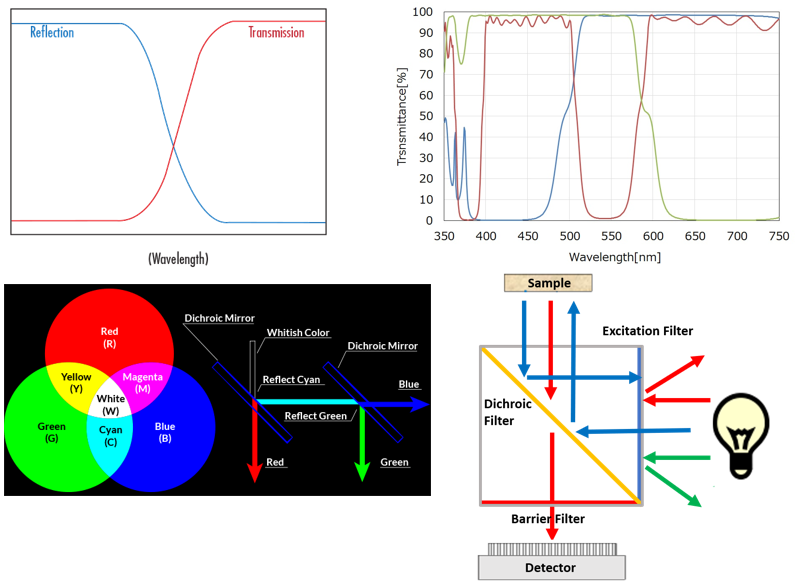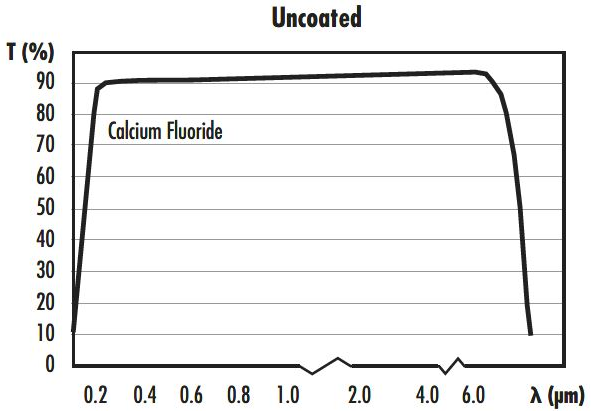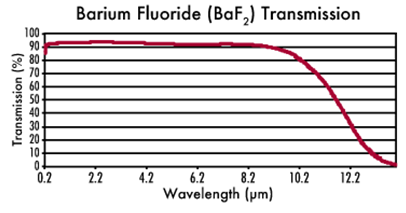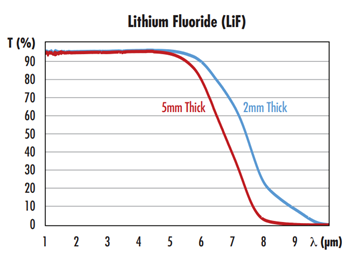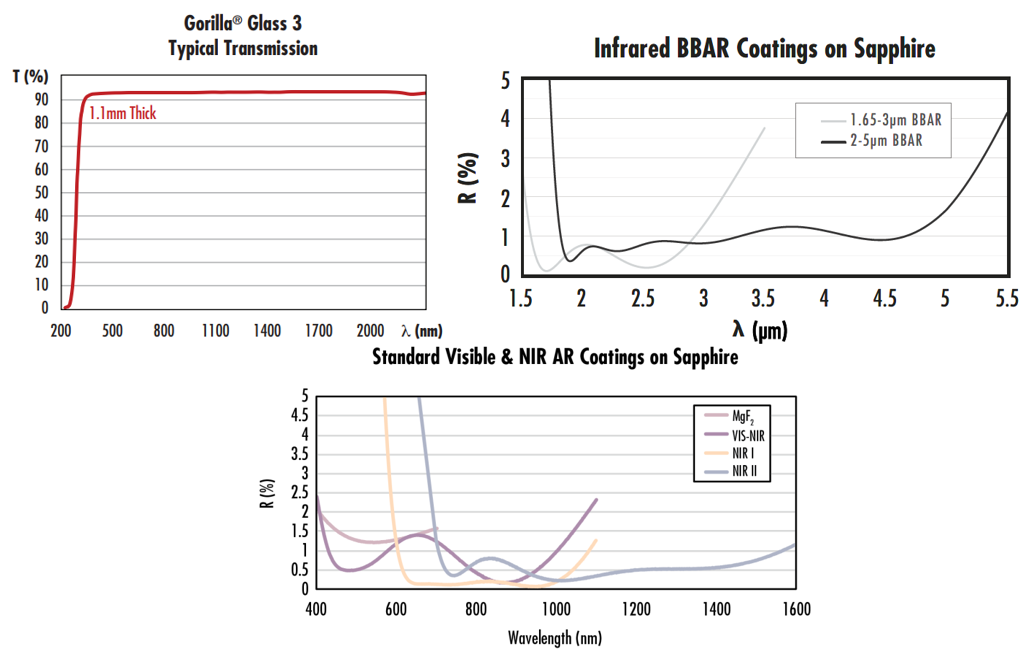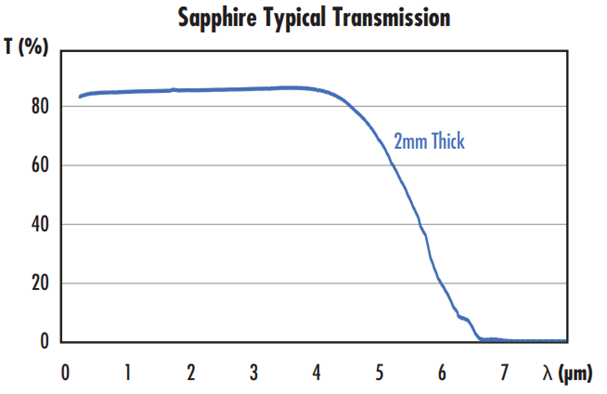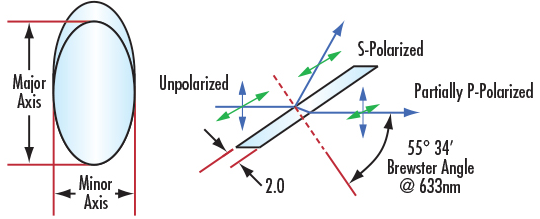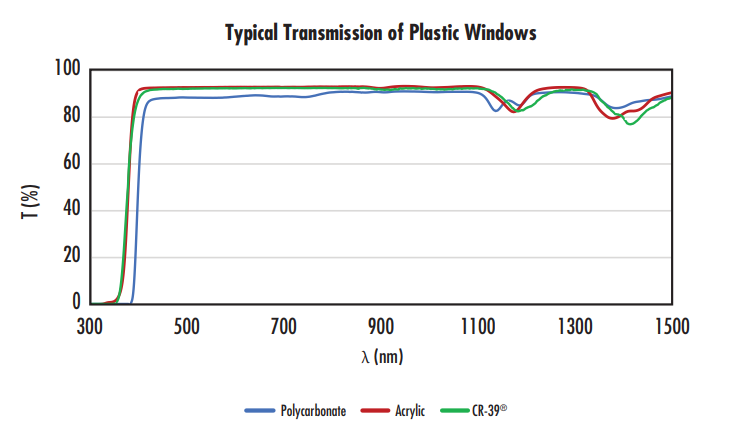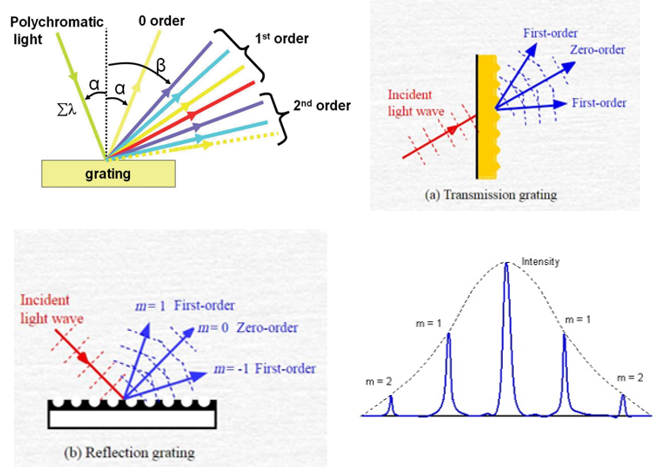参考资料:
Optical Aberrations
光纤/激光和简单配件
光纤简介
POF — Polymer Optical Fibers 聚合物光纤
cladding [ˈklædɪŋ] 包层
Liquid Light Guide: The liquid light-guide is a flexible tube with a liquid core that is used as an alternative to a light guide made of thin silica or glass fiber bundle and provides excellent light transmission. The liquid light guides are highly flexible and do not break. The liquid light-guide has the cross-section of a pipe, thus has no packing losses like a fiber based light guides, which have spaces between the thin fibers where no light goes through.

Fiber Connector Adapters: Fiber Connector Adapters are receptacle-type adapters designed to extend cable length by joining two fiber optic patch cords together with low coupling loss.
从LED到平行光输出(光纤)
Fiber Coupler LED:

Fiber collimator (光纤准直器): 参考prizmatix网站,如下图
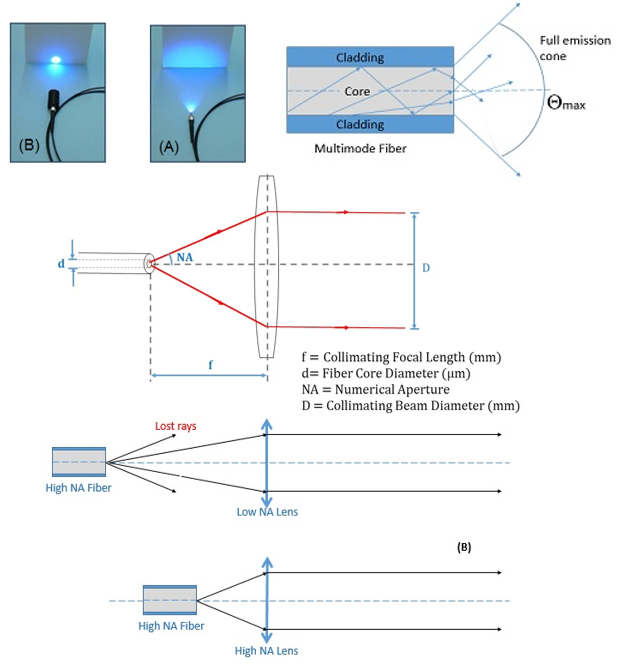
Combiner/Splitter/Shutter/Couplers/Exapander
Beam Combiner
A beam combiner may be a combination of beam splitters and mirrors, or simply several beam splitters.
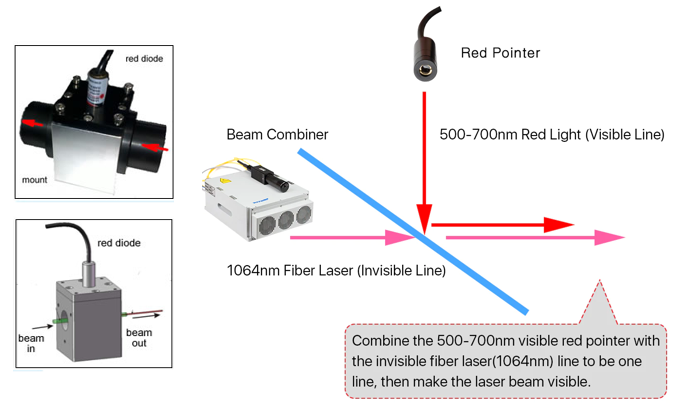
Diaphragm Shutters with Controller:
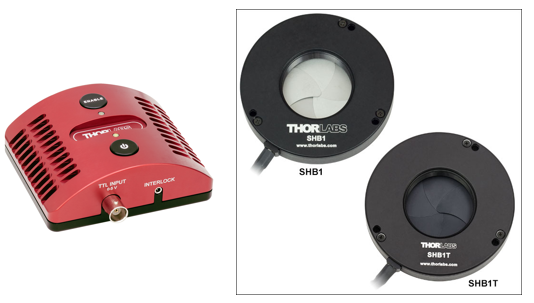
- Shutter Blades Open from the Center
- Uncoated or PTFE-Coated Stainless Steel Blades
- Manual or TTL Input Control
Multimode Fiber Optic Filter/Attenuator Mounts: [thorlabs]
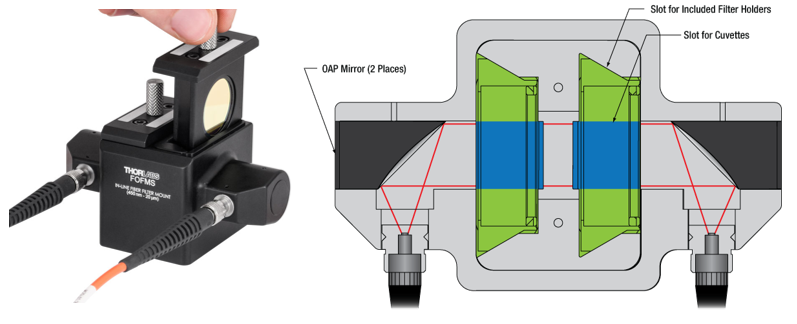
- Reflective, Achromatic Design for 250 nm - 450 nm or 450 nm - 20 µm
- Mount Filters, Cuvettes (比色皿), or Variable Attenuator in the Optical Path
- Ideal for Ø200 µm to Ø1000 µm Core Multimode Fibers with ≤0.39 NA
- Models with FC/PC or SMA Connectors
Reflective Beam Expanders
Reflective Beam Expanders are modified Gregorian or Cassegrain mirror systems that offer broadband performance virtually free of chromatic and spherical aberration. A convex mirror is used to expand an incident beam onto a concave mirror, resulting in a larger collimated beam.
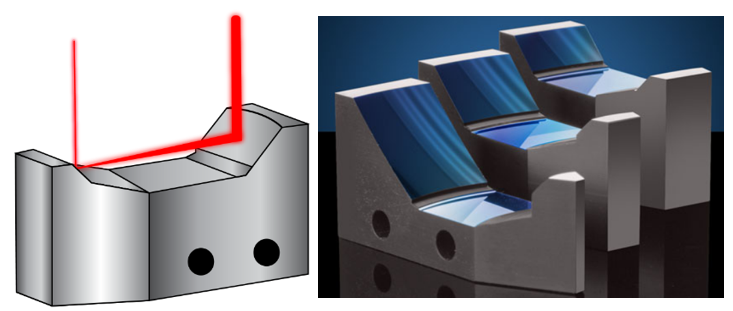
Triplet Fiber Optic Collimators/Couplers:
Aspheric Fiber Collimators:
Beam Shaper
Filter/Mirror/Polarizer/Windows/Glass/Coating
简而言之,有如下几种:
- 带通滤波片(Bandpass Filters)
- 长通滤波片(Longpass Filters)
- 短通滤波片(Shortpass Filters)
- 吸热玻璃(Heat Absorbing Glasses )
- 冷镜(Cold Mirrors)
- 热镜(Hot Mirrors)
- 陷波滤波片(Notch Filters)
- 彩色基片滤光片(Color Substrate Filters)
- 二向色滤光片(Dichroic Filters)
- 中性密度滤波片(Neutral Density (ND) Filters)
- 参考资料:Introduction to Optical Filters
Filter/Mirror
参考资料:
(1) Teledyne Imaging-Filter Introduction
(2) Edmund-Filter
A Dichroic Filter is a type of filter used to transmit or reflect light, depending on the wavelength; light of a specific wavelength range is transmitted, while light of a different range is reflected or absorbed. Dichroic filters are commonly used for longpass and shortpass applications.
应用:
(1) Two dichroic mirrors are used in 3LCD systems to divide the light from the lamp into red, green, and blue. The base glass of these two mirrors is coated with a thin film that reflects only light of a specific wavelength.
参考资料:
(1) dichroic mirrors-Encyclopedia
Polarizer

使用相机的偏光镜旋转到两个不同的角度拍摄同一个窗子。在左图中,偏光镜的角度与窗子反射的偏振角对齐。在右图,偏光镜旋转了90°,消除了严重偏振的反射光。反射光里面偏振光的成分比较多(部分偏振),特别是如果入射角度恰好为布儒斯特角,那么反射光就是完全的线偏振光。偏振镜安装在镜头上后,通过旋转偏振镜,可消除水面的反光而拍摄水底的景象。
1/4波片
待补充
参考资料:
(1) 四分之一波片的三种用法—知乎
(2) 1/4波片原理(Quarter-wave plate)—知乎
窗口材料Windows
- Low Absorption, High Transmission UV Grade Calcium Fluoride
- Ideal for Applications Ranging from 200nm - 7μm
- Low Index of Refraction
- Excellent Transmission from 200nm - 12 μm
- Resistant to High-Energy Radiation
- Provide High Transmission without AR Coatings
- Sensitive to thermal shock
- High Transmission from 150nm - 6μm
- Excellent Vacuum UV (VUV) Transmission
- Low Index of Refraction
- sensitive to thermal shock and is attacked by atmospheric moisture at temperatures above 400°C.
- Chemically Strengthened Drawn Glass
- Highly Resistance to Surface Scratches
- Ideal for Electronic Displays
- Features Extreme Surface Hardness Chemical Resistance
- Transmits Wavelengths Ranging From UV to Mid-Infrared
- Thinner and Stronger than Standard Glass Windows
- Anti-Reflection Coating Options Covering 400 - 5000nm Available
- Excellent Transmission from 250nm – 16μm
- Low Cost
- Ideal for FTIR Spectroscopy
- Potassium Bromide (KBr) Windows Also Available
- Excellent Transmission from 250nm – 26μm
- Good Resistance to Mechanical Shock
- Ideal for FTIR Spectroscopy
- Sodium Chloride (NaCl) Windows Also Available
- Reduce Loss of P-Polarized Light
- Circular Profile When Oriented at 55.57°
- Great for Use in Laser Cavities
- Transmission from 1.2 - 7μm
- Available Uncoated or AR Coated for 1.65 - 5μm
- Ideal for Weight Sensitive Applications (密度小)
- No Birefringence. Birefringence can degrade IR imaging performance, so selecting a material that is not birefringent is important. Since silicon features a cubic crystalline structure, it will not exhibit birefringence.
PMMA Plastic Windows
- Highly Scratch-Resistant
- High Visible Light Transmission
- Cost-Effective Alternative to Glass
Polycarbonate Plastic Windows
- High Visible Light Transmission
- Excellent Thermal Stability
- Durable and Lightweight
光学玻璃
简介
光学玻璃:其和普通玻璃的主要区别是其具有高度透明性、物理及化学上的高度均匀性以及特定和精确的光学常数。[mathjax]
光学玻璃的组成:主要成分是二氧化硅,又称石英砂,熔炼玻璃时都要加入其他物质以改善玻璃的性能和满足关系系统成像的需要。
(1) Al2O3可以提高玻璃化学稳定性和机械强度;
(2) PbO和BaO可以增大玻璃折射率,但化学稳定性降低;
(3) 加入Na2O可以降低熔炼温度;
(4) As2O3可以澄清气泡;
(5) CdO可以改善玻璃的化学稳定性。
(6) Ta2O5,高折射低色散特种光学玻璃
光学玻璃的重要参数
(1) 色散
The dispersion is measured by a standard parameter known as 阿贝数(Abbe number)就是用以表示透明介质色散能力的指数。一般来说,介质的折射率越大(不太对),色散越严重,阿贝数越小;反之,介质的折射率越小,色散越轻微,阿贝数越大。阿贝数常用于镜片行业,是镜片的选购参考因素之一。,眼用的光学镜片材料阿贝数一般在30到60之间。供人佩戴的镜片阿贝数不应该低于30,否则明显的色散现象会让佩戴者视觉模糊,进而可能产生不适现象。
可见光波段阿贝数的定义:\( V_{D}=\displaystyle\frac{n_{D}-1}{n_{F}-n_{C}}\)
D光—黄光,587.6nm,钠光谱中的D线;
F光—蓝色,486.1nm,氢光谱中的F线 ;
C光—红光,656.3nm,氢光谱中的C线
对于 non-visible spectral lines,有更general formulation defined as $$V=\frac{n_{\text {center }}-1}{n_{\text {short }}-n_{\text {long }}}$$由于色散会影响介质的成像效果,阿贝数通常应用在镜片领域,通过它来衡量镜片的成像质量。阿贝数越高,色散越小,视觉效果就越清晰。阿贝数太低,会使镜片出现彩虹纹,影响使用者的视觉清晰度。在眼用光学镜片领域,材料的阿贝数一般在30-60之间,从色散的角度来考虑是阿贝数越大越好,但往往阿贝数越大,要求镜片的折射率越小,相同度数的镜片也就越厚;而如果我们一味追求高折射率镜片,镜片变得超薄了,但是其阿贝数也会随之减少。
参考:
(1) Dispersion-Hyperphysics
(2) 折射率(Refractive Index)
Refractive Index is the ratio of the speed of light in a vacuum to the speed of light in the specified material - a description of how light slows down as it passes through an optical material. The refractive index for optical glasses, \( n_d\), is specified at a wavelength of 587.6nm (Helium d-line). Materials with a low index of refraction are commonly referred to as "crowns"(冕牌玻璃-低折射率,低色散) whereas materials with a high index of refraction are referred to as "flints." (火石玻璃)
(3) 透过率(Transmission)
Standard optical glasses offer high transmission throughout the entire visible spectrum and beyond in the near-ultraviolet and near-infrared ranges. Figure 1 shows internal transmission of 5mm thick substrates without Fresnel reflections. Transmission data was gathered using Edmund Optics’ spectrophotometers. Crown glasses tend to have better transmission in the NUV than do flint glasses. Flint glasses, because of their high index, feature higher Fresnel reflection loss and thus should always be specified with an anti-reflection (AR) coating.
(4) 折射率和色散的差别(Refractive Index Versus Dispersion)
Refractive Index is a measurement of how much light bends as it passes through a transparent object. Dispersion is a measurement of the difference between how far violet light bends versus red light. These two ends of the spectrum bend at different rates, which is why we see rainbows!
A higher refrective index always mean a higher dispersion rate?
No, the two of them are not directly propotionately related to them on a linear scale. 比如Cubic Zirconia的折射率大约2.15,钻石的折射率是2.4,但是实际上钻石的折射率低于Cubic Zirconia,Cubic Zirconia的阿贝数为33.54,钻石的为65.290323,所以Cubic Zirconia看起来颜色更炫。参考:What is Refractive Index Versus Dispersion?
注:菲涅尔反射是什么?—知乎,另外根据公式\(R=\left|\displaystyle\frac{n_{1}-n_{2}}{n_{1}+n_{2}}\right|^{2}\),在入射角为零的时候,玻璃的折射率越大,那么反射比例越高。
镧玻璃
Lanthanum is used in many high index glasses; high index glass, when combined with other glass materials, improves dispersion and is utilized in many achromats and imaging lenses (消色差和成像透镜) to increase efficiency and improve image quality. 镧系玻璃是兴起于二战后的新型光学玻璃,主要是摄影物镜用,因为它折射率很高,可以在1.68到1.85左右,又有着比较大的阿贝数(意味着低色散)。在二战后那个时期,有1.7的折射率意味着你可以藐视一众原有的冕牌玻璃。存在疑问,折射率高,不应该是色散严重,阿贝数小吗?
镧系玻璃难做
- 原料昂贵;
- 成玻璃范围窄,氧化镧是非常容易导致玻璃在混熔降温过程中制造失败(析晶)的组分,加镧越多,折射率会越高,但析晶的风险也越大。
- 熔融混合物粘度低,侵蚀性强,形成的玻璃化学稳定性也不够好。
参考资料:
(1) 几个关于镧系玻璃制造的事实
(2) Lanthanum based glass?
稀土掺杂激光玻璃
玻璃的的优点是原料成本低,容易制成各种形状,工艺过程也远比晶体生长简单。缺点是热导率差,因而不能用于大功率器件。
几何光学薄膜Coating/Film/Sheeting等
Retroreflector(逆反射器)
逆反射器实现的功能是retroreflection(逆反射),意思就是光从哪个方向来,就从哪个方向反射回去。
方案-1:corner reflector
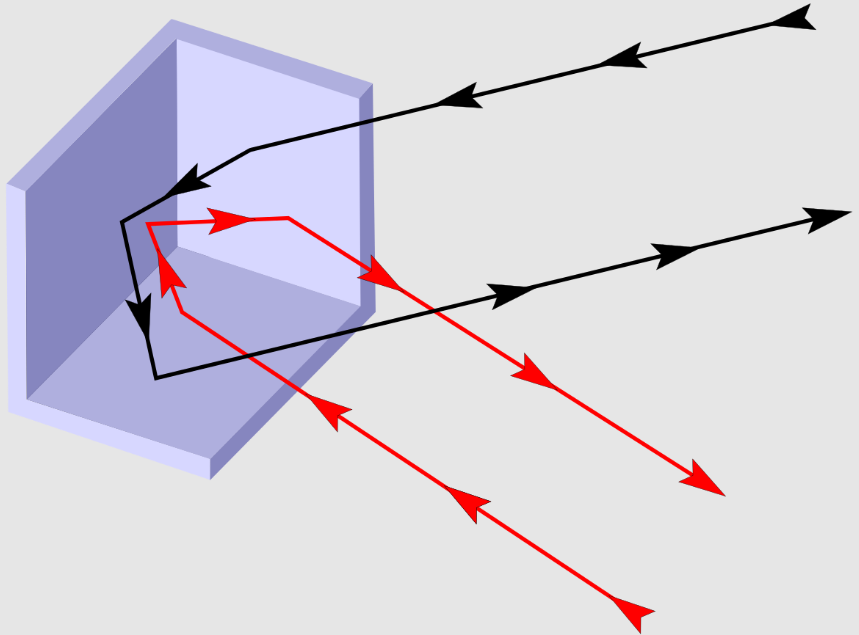
三个垂直的反射镜让光在相互垂直的三个平面镜间反射,这种方案是不会涉及到全反射原理。
方案-2:Cat's eye
方案-3:Phase-conjugate mirror
x
参考资料:
(1) 自行车尾灯原理到底是什么?—知乎
(2) Retroreflector-Wiki
Anti-Reflection (AR) Coatings
Due to Fresnel reflection, as light passes from air through an uncoated glass substrate approximately 4% of the light will be reflected at each interface. This results in a total transmission of only 92% of the incident light, which can be extremely detrimental in many applications (Figure 1). Excess reflected light reduces throughput and can lead to laser-induced damage in laser applications. Anti-reflection (AR) coatings are applied to optical surfaces to increase the throughput of a system and reduce hazards caused by reflections that travel backwards through the system and create ghost images. Back reflections also destabilize laser systems by allowing unwanted light to enter the laser cavity. AR coatings are especially important for systems containing multiple transmitting optical elements. Many low-light systems incorporate AR coated optics to allow for efficient use of light.
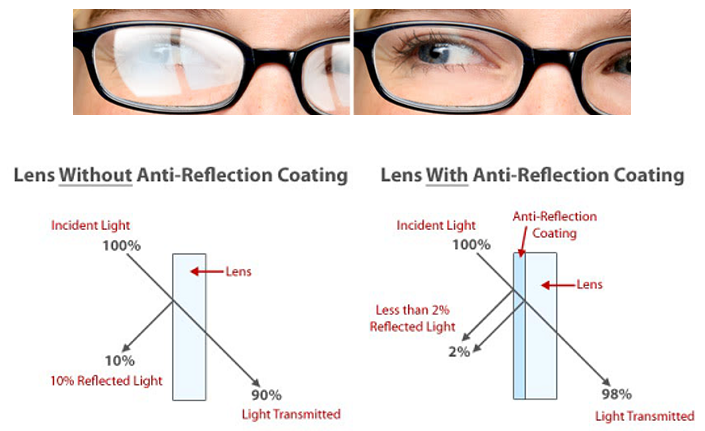
膜的光学厚度为\(H = nh\),其中\(h\)为物理厚度,那么光学厚度\( H\)为入射波长四分之一\( \lambda/4\)的奇数倍时,是增透膜,偶数倍则为增反膜。注意两次反射都存在半波损失,这样实际光程差就是厚度的两倍,然后再考虑膜的折射率;注意图中示意图是非垂直入射的情况,这样实际光程差还需要考虑入射角度。
如果只是从折射率的角度考虑减小反射,那么对于膜来说optimal value is given by the geometric mean of the two surrounding indices: $$n_{1}=\sqrt{n_{0} n_{S}}$$

- \( \lambda/4\) MgF2: The simplest AR coating centered at 550 nm (with an index of refraction of 1.38 at 550nm). MgF2 coating is ideal for broadband use though it gives varied results depending upon the glass type involved.
- VIS 0° 和 VIS 45°: VIS 0°(对于 0° 入射角)和 VIS 45°(对于 45° 入射角)为 425 – 675 nm 提供优化的透射率,将平均反射率分别降低到 0.4% 和 0.75%。对于可见光应用,VIS 0° AR 涂层优于 MgF2 。
- VIS-NIR:我们的可见光/近红外宽带减反射涂层经过特别优化,可在近红外区域产生最大透射率 (>99%)。
- Telecom-NIR:我们的电信/近红外是一种专门的宽带增透膜,适用于 1200 – 1600 nm 的流行电信波长。
- UV-AR 和 UV-VIS:紫外线镀膜应用于我们的紫外熔融石英镜片和紫外熔融石英窗,以提高其在紫外线区域的镀膜性能。
- NIR I 和 NIR II:我们的近红外 I 和近红外 II 宽带增透膜在普通光纤、激光二极管模块和 LED 灯的近红外波长范围内具有卓越的性能。
以上参考资料[Edmundoptics]
Optical Compensation Film
Optical Lens/Grating
根据光路的可逆,准直镜有两个作用:
- Focus Collimated Light
- Collimate Light from a Point Source
参考圆锥曲线的光学性质—小时百科,我们知道抛物线(parabola)焦点处发出的光,经过抛物线反射后,会得到平行光。同样地,一束平行于抛物线主轴的Collimated beam射向抛物线,光线会汇聚到焦点处。
【抛物线反射器】(Parabolic reflector or dish or mirror) is a reflective surface used to collect or project energy such as light, sound, or radio waves. Its shape is part of a circular paraboloid, that is, the surface generated by a parabola revolving around its axis. The parabolic reflector transforms an incoming plane wave travelling along the axis into a spherical wave converging toward the focus. Conversely, a spherical wave generated by a point source placed in the focus is reflected into a plane wave propagating as a collimated beam along the axis. 在光学领域,抛物面镜被用来在反射式望远镜和太阳炉中收集光线,并在手电筒、探照灯、舞台聚光灯和汽车头灯中投射出一束光。在无线电领域,抛物面天线被用来辐射一束狭窄的无线电波,用于卫星天线和微波中继站的点对点通信,并在雷达装置中定位飞机、船舶和车辆。在声学方面,抛物线麦克风被用来记录遥远的声音,如鸟叫,在体育报道中,以及在间谍和执法中偷听私人谈话。【太阳能灶】(Solar cooker)就是基于此原理设计的,作为太阳灶使用,要求在锅底形成一个焦面,才能达到加热的目的;换言之,它并不要求严格地将阳光聚集到一个点上,而是要求一定的焦面。有下面几种Parabolic reflector类型:
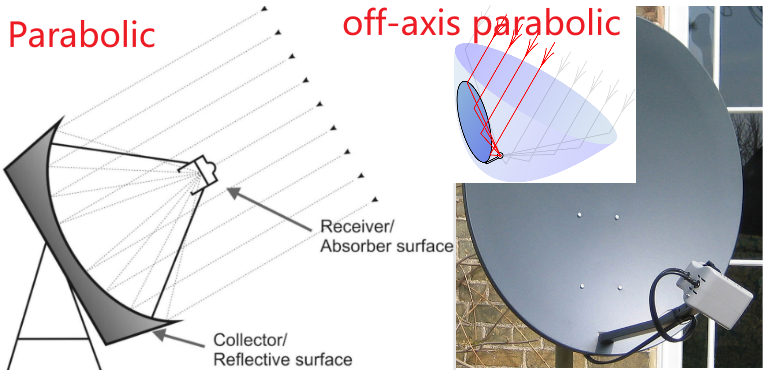
- Parabolic reflector,最简单的类型,即抛物线的的长轴顶点(vertex)在reflector上,过该点的一段抛物线旋转就得到reflector。There are a few negatives associated using with using conventional parabolic mirrors, which are symmetric around the focal point (Figure 3). One is that the sides of the mirror generally obstruct access to the focus. Another is that when the mirror is used to collimate a divergent light source, the housing of the light source blocks a portion of the collimated beam. In particular, light emitted at small angles with respect to the optical axis of the mirror is typically obstructed. 于是人们又发明了Off-axis parabolic reflector;
- Off-axis parabolic reflector,一个圆形抛物面的大小理论上是无限的。任何实用的反射器都只使用它的一个部分。通常,该段包括抛物面的顶点,其曲率最大的地方,以及对称轴与抛物面相交的地方。然而,如果反射器被用来将传入的能量集中到接收器上,接收器的影子就会落到抛物面的顶点上,这是反射器的一部分,所以反射器的一部分被浪费了。This can be avoided by making the reflector from a segment of the paraboloid which is offset from the vertex and the axis of symmetry.
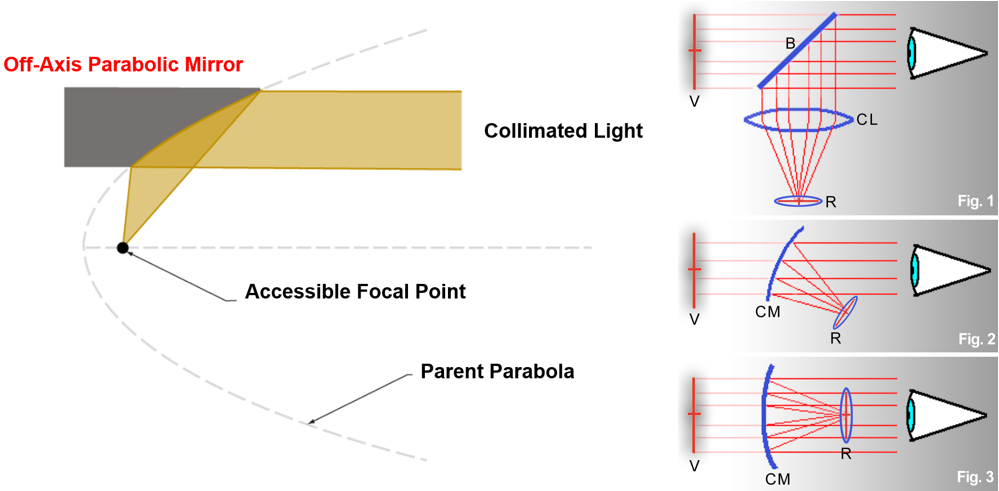
- 上图是off-axis parabolic mirror的示意图,以及Diagram of three types of reflector sights。
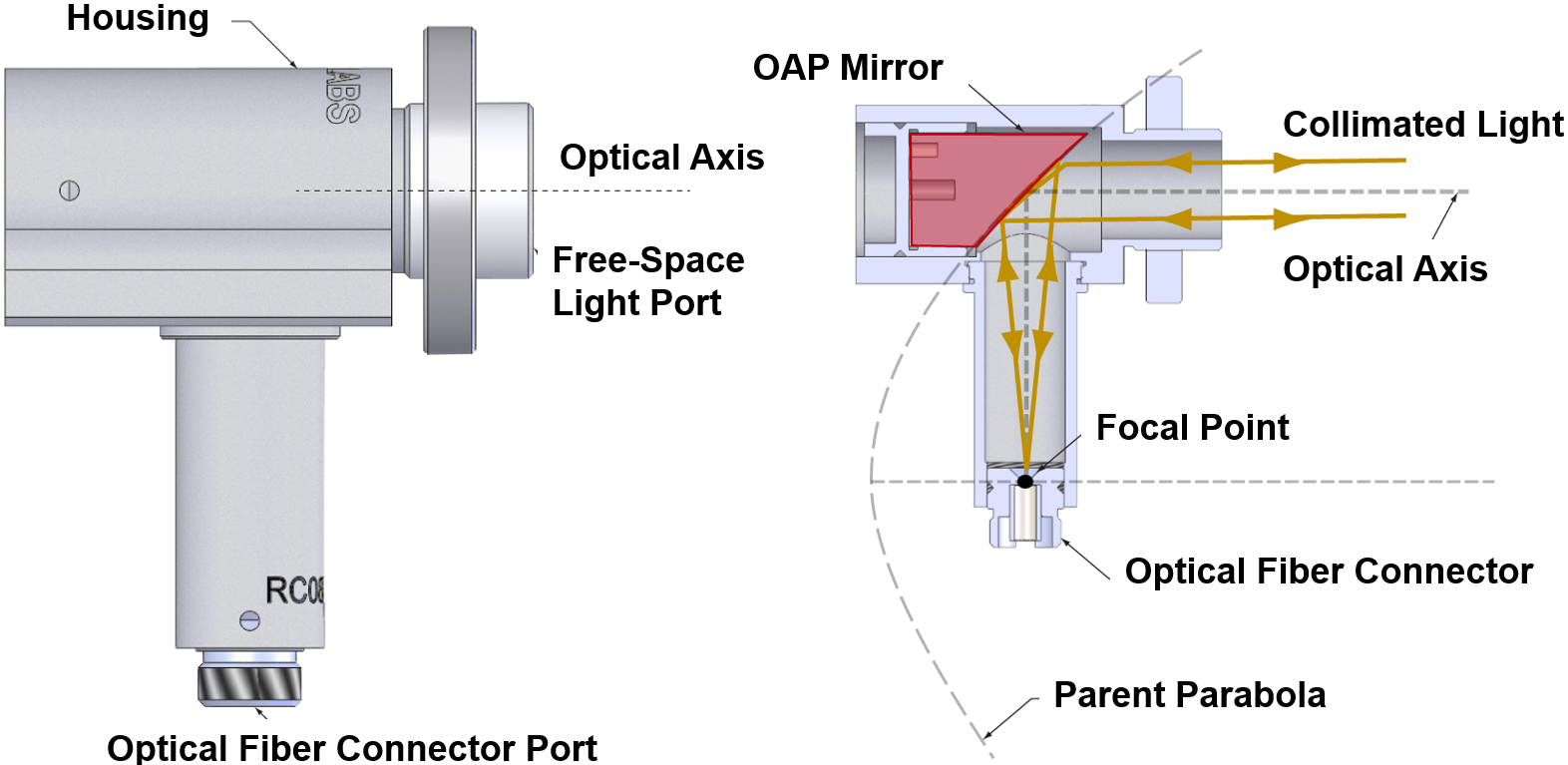
- 另外还有一种可以接光纤的准直镜,如图上。The two ports on Thorlabs' reflective collimators are not interchangeable. One port accepts an optical fiber connector and requires the highly divergent light of a point source. The other port is designed solely for collimated, free-space light
Parabolic Mirror Versus Spherical Mirror
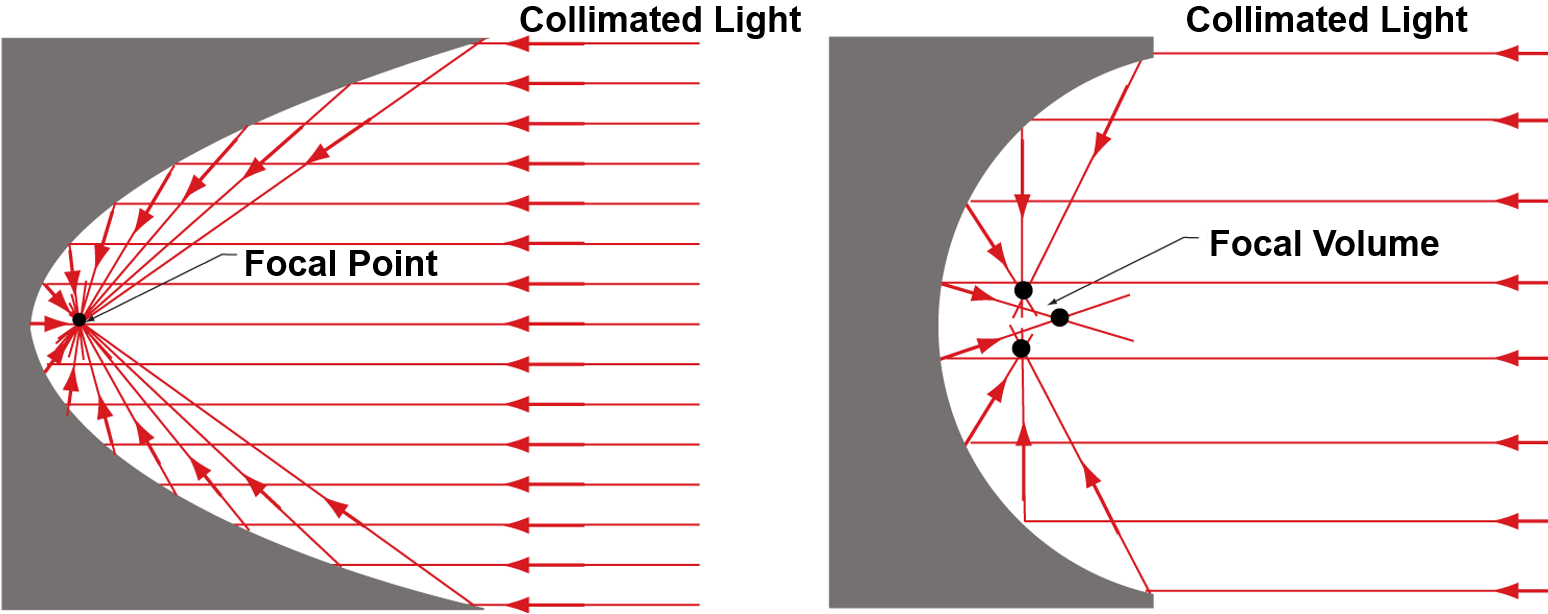
- Parabolic mirrors perform better than spherical mirrors when collimating light emitted by a point source or focusing a collimated beam.
- Focusing Collimated Light
- Parabolic mirrors focus all rays in an incoming, collimated light beam to a diffraction-limited spot.
- Concave spherical mirrors concentrate incoming collimated light into a volume larger than a diffraction-limited spot. The size of the spherical mirror's focal volume can be reduced by decreasing the diameter of the incoming collimated beam.
- Collimating Light from a Point Source
- A point source emits light in all directions. When this highly divergent light source is placed at the focal point of a parabolic mirror, the output beam is highly collimated. If the point source were ideal, all reflected rays would be perfectly parallel with one another.
- When a point source is placed within a spherical mirror's focal volume, the output beam is not as well collimated as the beam provided by a parabolic mirror. Different rays from the point source are not perfectly parallel after reflection from the spherical mirror, but two reflected rays will be more nearly parallel when they reflect from more closely spaced points on the spherical mirror's surface. Consequently, the quality of the collimated beam can be improved by reducing the area of the reflective surface. This is equivalent to limiting the angular range over which the source in the focal volume emits light.
- Choosing Between Parabolic and Spherical Mirrors: A parabolic mirror is not always the better choice. Beam diameter, cost constraints, space limitations, and performance requirements of an application all influence selection. Beam diameter is a factor, since the performance of these two mirrors is more similar when the beam diameter is smaller. Parabolic mirrors are more expensive, since their reflective profiles are more difficult to fabricate. Parabolic mirrors are also typically larger. Improved performance may or may not be more important than the difference in cost and physical size.
参考资料:
(1) Focus or Collimate Light with an Off-Axis Parabolic Mirror—thorlabs
(2) Insights into Off-Axis Parabolic Mirrors—thorlabs
(3) Parabolic reflector—Wiki
Fresnel lens (菲涅耳透镜)
手机闪光灯螺纹
航海灯塔
Ball Lenses (球透镜)
Ball lenses are great optical components for improving signal coupling between fibers, emitters, and detectors. They are also used in endoscopy(内视镜), bar code scanning, ball pre-forms for aspheric lenses (非球面镜), and sensor applications. Ball lenses are manufactured from a single substrate of glass and can focus or collimate light(使光线平行), depending upon the geometry of the input source. Half-ball lenses are also common and can be interchanged with full ball lenses if the physical constraints of an application require a more compact design.
应用-1:Fiber to Fiber Coupling
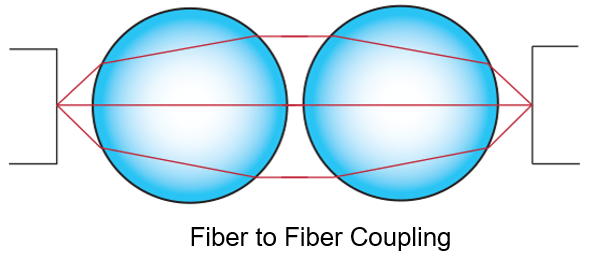 To couple light from one fiber optic to another fiber optic of similar NA, two identical ball lenses can be used. Place the two ball lenses at the back focal length from the fibers
To couple light from one fiber optic to another fiber optic of similar NA, two identical ball lenses can be used. Place the two ball lenses at the back focal length from the fibers
Achromatic lens
参考资料:
(1) Achromatic lens-Wiki
(2) Chromatic Aberration-Hyperphysics
Power Meter and Sensor Tutorial
